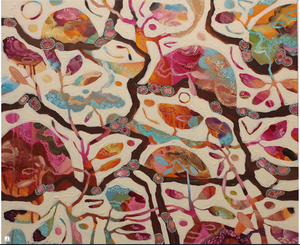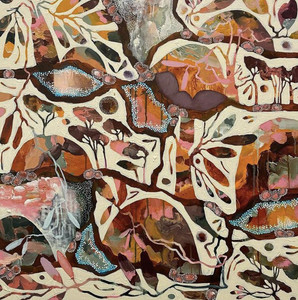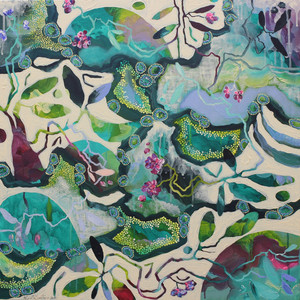Rosetta Santucci
Having spent over a decade experimenting with applications like jewellery and textile design, it was a natural progression for me to start painting.
My background in costume for film and television and a passion for textiles - primarily tribal and ethnic designs – has influenced my painting style.
I’m self taught, and it has only been through practice and time that I have nurtured my style. I grew up in the Barossa Valley surrounded by vineyards and wide open spaces, and in so doing, developed a deep concern with natural forms connected to life – plants, bones, feathers, hills, trees, stones, and water. More and more I realise that my paintings are a path of self discovery and an expression of life’s experiences. As an artist, I understand that nature and life have a lot to offer
These works reflect a kind of juxtaposition of the landscape around me. Cutting, chopping, and reassembling pieces together again from a scrapbook of memories and imagination. Small dots and markings represent natures gifts from the elements.
The final piece is a mosaic of my own landscape, threading nature and life together.
With Santucci … there is a pleasure principle at work. The viewer is invited to explore the carpet-like designs as if gazing down at landscapes composed of vineyards, paddocks, roads, creeks and trees.
Santucci enjoys building the image by first creating rich exchanges of colours, textures and patterns then seductively masking and isolating areas using white pigment. Santucci’s exploitation of translucency, particularly in the final overlays … give her images allusive, poetic qualities. Her references also to the specifics of everyday things such as buds, branches, a trowel, trees, roads, the moon and stars introduce a clue-search dynamic to the viewing. There are contexts for this work, more European than Australian. I’m thinking of obvious similarities with Paul Klee’s worlds of invention but more of the painterly values and semi-abstract style associated with post-WW2 artists working out of St Ives in Cornwall, William Scott




